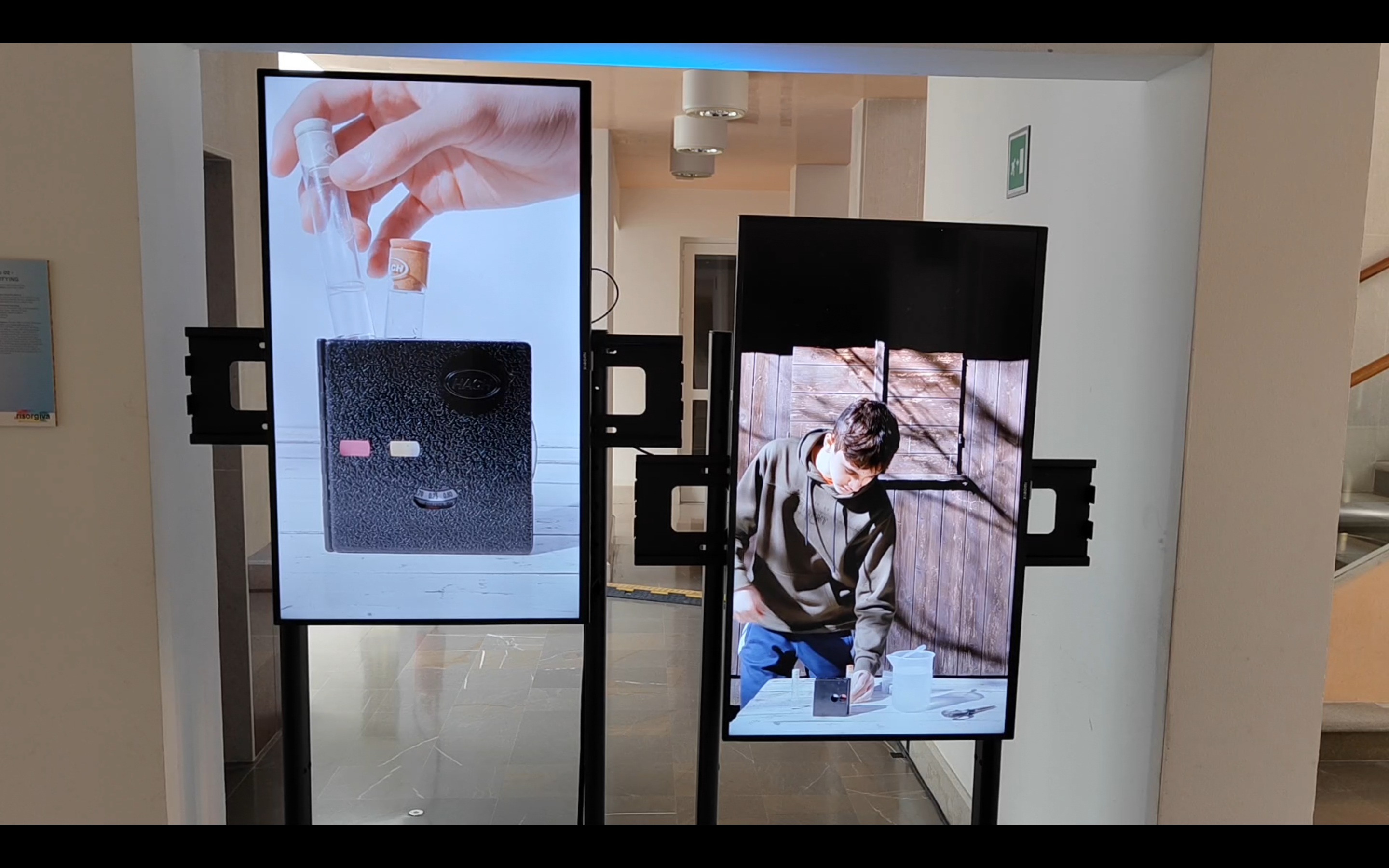RISORGIVA | endangered ecosystems
Project conceived and curated by Francesco Scarel (Liminal Research ETS) within the Staranzano Water Festival
with the contribution of the Municipality of Staranzano and the FVG Region
Collaborations: Peter Purg, Xcenter and Xmobil, Miha Godec, Organic Audio, Filippo Gobbato, Mattia Cuttini, Michele Libralato, PiNA, Mauricio Valdes


The wetlands, defined by the Ramsar Convention of 1971, are crucial for the future of our planet as natural solutions to climate change: they not only host rich biodiversity but also absorb a significant amount of carbon dioxide from the atmosphere, much more than a forest does.
The Schiavetti wetland is a fragile and delicate ecosystem located between Monfalcone and Staranzano, surrounded by significant and constant human presence.
Like all wetlands worldwide, it is at risk of extinction due to rising sea levels and increasing global temperatures.
TEASER
Part I - Exploration and Data Collection
Together with some classes from the BEM High School in Staranzano, we explored the “Schiavetti” biotope through a series of workshops and labs. In this way, we were able to gather information and scientific data about the Schiavetti biotope, an ecosystem on the verge of extinction. The goal is to create an exhibition that can convey the biotope in the form of images, videos, sounds, and data to the visitors of the 2024 Water Festival in Staranzano.
Workshops conducted:
- Chemical-physical analysis of water: salinity, conductivity, dissolved oxygen, nitrates, and nitrites.
- Artistic exploration with artist Miha Godec of water and soil samples collected, using TDS and humidity sensors connected to a modular synthesizer, resulting in a sonification of the various parameters previously collected by students, highlighted by numerical parameters using scientific instruments.
- Field recording workshop, exploration, and recording of environmental sounds with various types of microphones, including underwater ones, to then reproduce a unique and unrepeatable acoustic environment. The restitution of the biotope's sounds will take place through an artistic installation, thanks to Mauricio Valdes of PiNA (Koper, Slo) and dodekaOTTO, a device for listening to sound in 3D.
- Delta T, a workshop with a thermal camera provided by the University of Udine along with researcher Michele Libralato, artist Mattia Cuttini, and science communicator Francesco Scarel, to discuss temperature and heat exchange between bodies in an ecosystem, a delicate topic made visible by the infrared sensor of the thermal camera.
- Some students participated in a video workshop led by Filippo Gobbato of Piccolo Cinema Onirico and documented the three days of workshops.
To ensure electricity in the field, we could rely on Professor Peter Purg and the Xmobil, a mobile and modular laboratory with solar panels that provides electricity where needed, provided by Xcenter, the science museum of Nova Gorica (Slo).




















Part II - Exhibition RISORGIVA - Endangered Ecosystems
The genius loci of the “Schiavetti” biotope decided to make its presence felt and seen within a town hall, an exemplary place conceived and erected by our society for the purpose of listening to ideas, deliberating decisions, and safeguarding social and environmental welfare. Bringing the biotope into this anthropic structure was an interdisciplinary group composed of BEM students, teachers, scientists, and artists who dedicated three days to studying this wetland area of our territory. Through a series of field workshops, the research group collected data representative of the current state of this natural environment, so it can be compared with what it will be like in 2050, a date identified by the IPCC as crucial for measuring our efforts in tackling climate change.











Part III - Burying the Time Capsule
Data, surveys, photographs, videos, and ambient audio recordings collected during the workshops have been placed in a time capsule, a steel archive for the future. This capsule will be buried near the BEM school in Staranzano and is marked for reopening in 2050.


